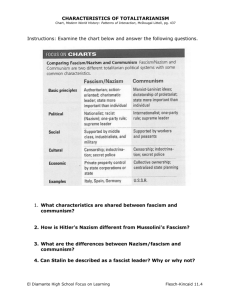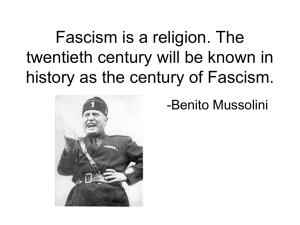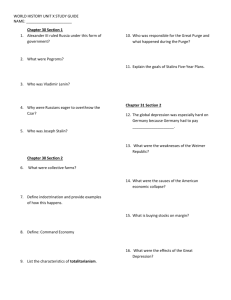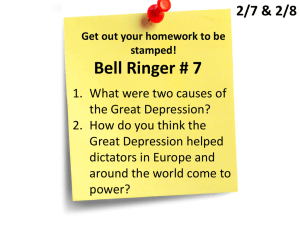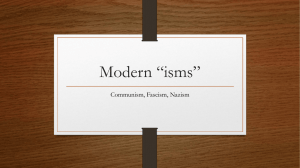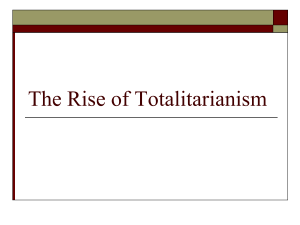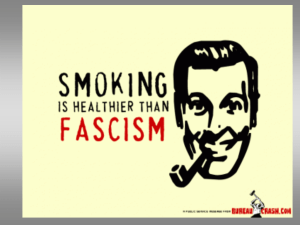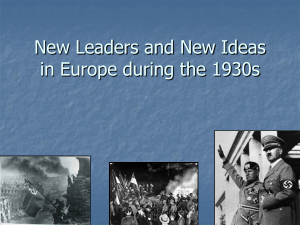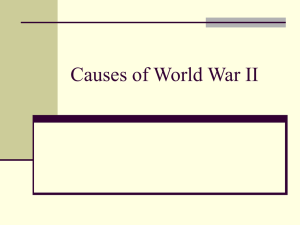TOTALITARIANISM
advertisement
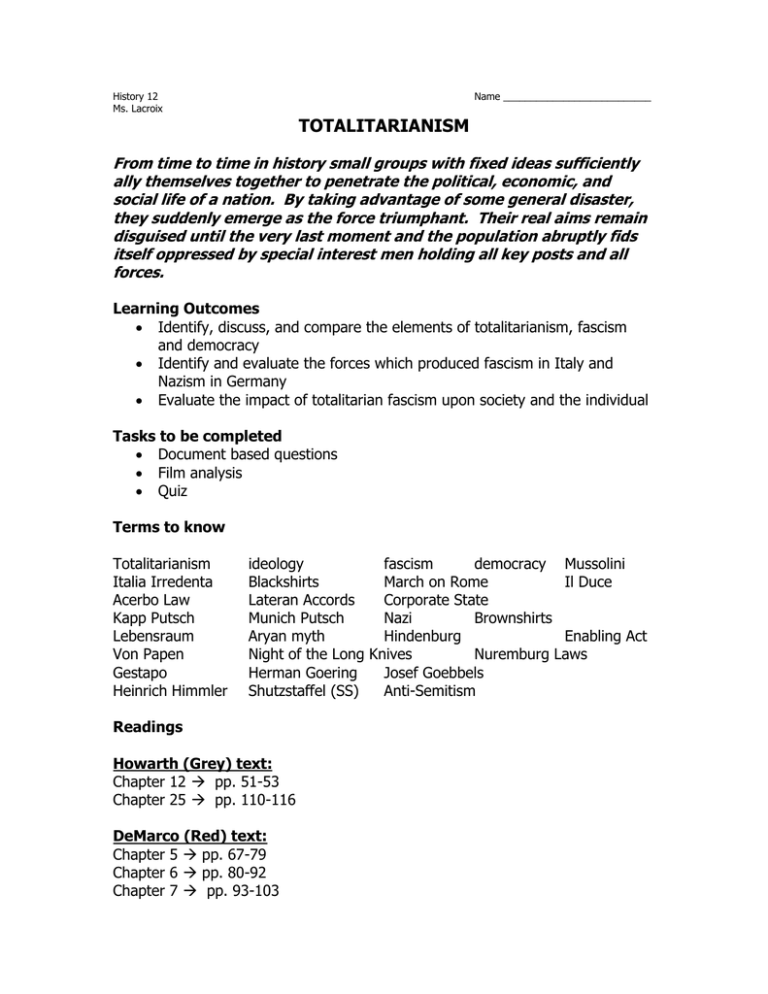
History 12 Ms. Lacroix Name ___________________________ TOTALITARIANISM From time to time in history small groups with fixed ideas sufficiently ally themselves together to penetrate the political, economic, and social life of a nation. By taking advantage of some general disaster, they suddenly emerge as the force triumphant. Their real aims remain disguised until the very last moment and the population abruptly fids itself oppressed by special interest men holding all key posts and all forces. Learning Outcomes Identify, discuss, and compare the elements of totalitarianism, fascism and democracy Identify and evaluate the forces which produced fascism in Italy and Nazism in Germany Evaluate the impact of totalitarian fascism upon society and the individual Tasks to be completed Document based questions Film analysis Quiz Terms to know Totalitarianism Italia Irredenta Acerbo Law Kapp Putsch Lebensraum Von Papen Gestapo Heinrich Himmler ideology fascism democracy Mussolini Blackshirts March on Rome Il Duce Lateran Accords Corporate State Munich Putsch Nazi Brownshirts Aryan myth Hindenburg Enabling Act Night of the Long Knives Nuremburg Laws Herman Goering Josef Goebbels Shutzstaffel (SS) Anti-Semitism Readings Howarth (Grey) text: Chapter 12 pp. 51-53 Chapter 25 pp. 110-116 DeMarco (Red) text: Chapter 5 pp. 67-79 Chapter 6 pp. 80-92 Chapter 7 pp. 93-103 History 12 Ms. Lacroix Name ___________________________________ TOTALITARIANISM – CHAPTER QUESTIONS Come prepared each class with answers to these in order to engage in meaningful discussion. Lesson 1 – Italian Fascism under Mussolini, “Il Duce” 1. Why was Italy disgruntled at the end of the Great War? (H 51) 2. What difficulties did parliamentary democracy face in the new Italian state? (H 52) 3. To which group did Mussolini make his popular appeals? (H 52) 4. Describe what fascism was for and against. (H 52) 5. Why would Emmanuel III refuse to sign an emergency decree? (H 52) 6. What did the Acerbo Law guarantee for Mussolini and his party? (H 53) 7. What was the OVRA? (H 53) 8. What was the “Corporate State”? (H 53) Lesson 2 – The Weimar Republic Collapses 1. Who were the “Spartacists” and what was their goal? (D 80) 2. Make notes about the failed “Kapp Putsch”. (D 81) 3. Make notes about the failed “Munich Putsch”. (D 83) 4. What happened to the Weimar, under Bruning, when the world economy collapsed and the US called back its loan from Germany? (D 85-86) 5. Describe the importance of the Enabling Act. (D 89) Lesson 3 – The Nazis 1. Describe the growth of the NSDAP (Nazi Party). (H 110) 2. What was the role of the Gestapo? (D 93, H 113) 3. Who were the anti-social elements? (H 113) 4. Describe the ‘poison-dwarf’ Joseph Goebbels. (H 114) 5. What happened on the “Night of the Long Knives”? (H 112, D 94) 6. Familiarize yourself with the Nuremburg Laws. (H 115-116, D 97-98) 7. What is “autarky”? (H 118) 8. Describe Germany’s rate of remilitarization. (H 118, D 99-100)
